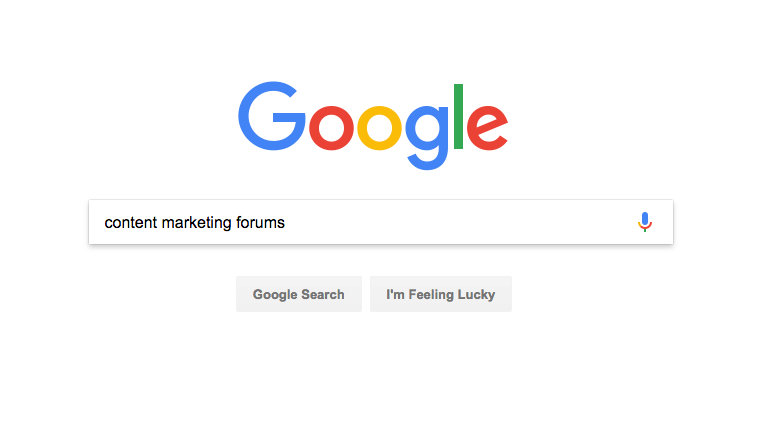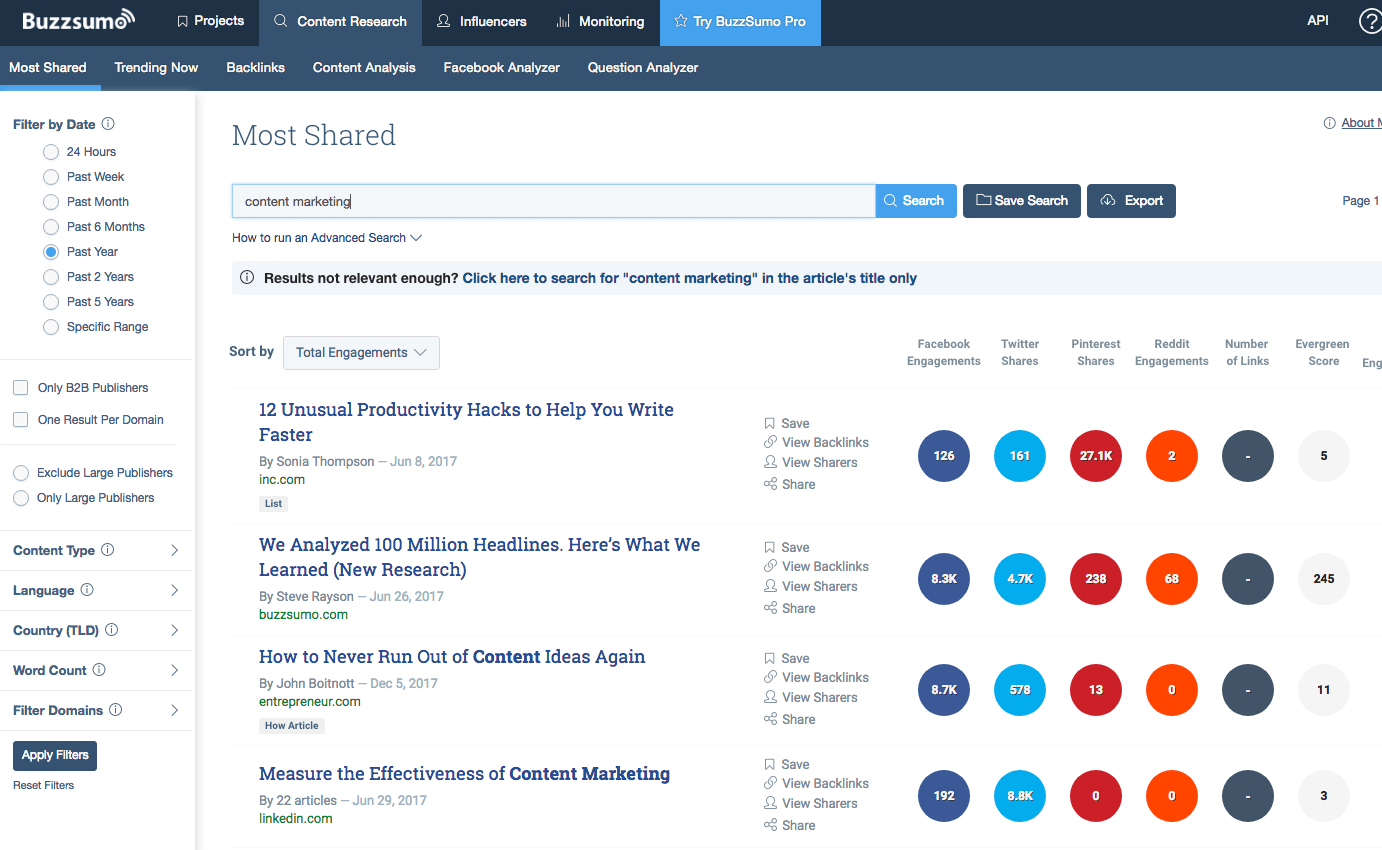We all make mistakes. We’re human, it’s in our nature. Unfortunately, some mistakes are more costly than others.
Take this example. We all remember the Steve Harvey flub a few years ago. Not only did his mistake of announcing the wrong Miss Universe winner embarrass him, it also opened the floodgates for the meme generators to poke fun at the poor guy (although, some of them were hilarious).

Luckily, making a mistake when creating your content marketing campaign won’t lead to an internet-shaming campaign. These types of mistakes can easily be corrected, even on content that’s already been published. The first challenge here is actually identifying those mistakes. To help you with this, we’ve created a list of seven common content marketing mistakes that you might currently be making and tips on how to overcome them.
MISTAKE #1: YOU DON’T ADD VALUE.
Are you are basically spewing out the features and benefits of your product or service in your content? If so, not many people are going to be attracted to it. But if you are educating them on something they find helpful or interesting, then you’re on the right track. What people are looking for in their content consumption is information they didn’t already know and they can connect with.
For example, say you and your friends were looking to hit the water to do some fishing and you were researching boat rentals. You come across two companies that rent similar boats at similar prices. They both have blogs—one of which simply talks about the features of all the boats they have. The other one includes tips and tricks for fishing in that area, along with where the hot spots are depending on the time of year. Odds are that you will naturally gravitate towards the company that’s adding value to your search and to the experience you will have once you do rent a boat.
Another way to discover if you’re truly adding value is to re-evaluate how much listening you’re doing. Are you pumping out articles without understanding what your prospects are thinking? Are you turning a shoulder to what people are saying on social media or industry forums? There’s no way to know what types of things your audience finds valuable unless you get in the trenches and discover it for yourself.
HOW TO ADD VALUE TO YOUR CONTENT.
Adding value is much easier than you think. Here are a couple of tips on what you can do to make sure you are getting it right:
1. Do a Google search of your product or service followed by the words “forums” and check out what people are saying. You can also search industry terms on Twitter or Facebook to learn what people are talking about from a social standpoint.

2. Research the top 30 FAQs that people are asking about your product or service and answer them. There’s no better value you can add than closing the curiosity gap of your prospects.
3. You can also use tools like BuzzSumo to see what types of articles are being shared on social media based off of keywords or URLs that you can search.
For a different take on adding value to your content, check out this post from the Sales Lion, Marcus Sheridan.
MISTAKE #2: YOU ONLY WRITE ABOUT WHAT OTHERS HAVE WRITTEN.
Are you monitoring what others are writing about in your industry? Are you basically writing about the same things? The problem with content marketing today is that industry topics are becoming saturated with material. In order for your content to stand out, it needs to be different.
For example, if you search “content marketing tips,” Google comes up with 660,000,000 results in less than a second. With that type of volume, it’s going to be near impossible to find your way to the first page. And if you read them, the majority of the articles are talking about the same exact things.
HOW TO DEVELOP UNIQUE CONTENT.
Below is a list of common objections you might have when you are creating content:
- We can’t give this information away for free.
- We can’t give away our secrets.
- We can’t talk about our prices.
- We can’t bring potential pitfalls about our solution to light.
- We can’t talk about our competition.
If any of these cross your mind, then you are holding back the potential for your content marketing success. In order to create unique content that separates you from your competition, you need to be willing to take risks. The majority of your competition is probably raising the same objections and refusing to write about any of those topics. But they are losing focus on the core content marketing goal: adding value for the reader. You need to always have the user in mind. If defying any of those objections brings value to your prospect, then defy away, my friend.
Let’s take the objection “We can’t talk about our prices,” for example. Say you are researching those boat rentals. What will be one of the first things you search? Price. And what happens when you search “boat rental prices?” Well, if a company defied that objection, then they will be sitting pretty on the first page ready to answer your common (and important) question. Not only will you be delivering uber-value when defying these objections, you’ll also be creating a conversation that none of your competition has the guts to talk about.
MISTAKE #3: YOU DON’T TAKE A STANCE.
Does your content sit on the fence? Does it speak with a passive voice, refusing to align itself with an opinion? While it’s important to be unbiased in the eyes of the reader when it comes to your product or service, that doesn’t mean that your company needs to lack any type of personality or morals. People associate assertiveness with authority and mastery, which will quickly increase your brand equity in the eyes of your prospects. In fact, opinionated content gets more social shares and backlinks according to this in-depth study done by Moz and BuzzSumo.
Let’s look at Chipotle for example. By taking a stance on “Food with Integrity”, they are portraying themselves as more than just a brand. They have taken a stance on an issue surrounding its industry—the morals behind the way food is made in America.
They’ve aligned themselves with an opinion, which makes it much easier for customers to feel a connection with them.

The result? Regardless of the E. coli issues in Chipotles across the States, their following stayed loyal and continued to eat there—risking their lives in the process. While you don’t necessarily want customers to risk their lives in order to use your product or service, this example demonstrates how taking a stance humanizes your brand and creates a loyal following.
HOW TO TAKE A STANCE.
- Don’t be afraid to include your opinion on industry news or current events related to your business.
- Don’t question people, question theories or ideas.
- Make sure you’re taking a stance on things related to your industry.
- Most importantly, back up your claims with real-life data or examples.
MISTAKE #4: YOU DON’T CONCENTRATE ON DISTRIBUTION.
Are you publishing your blog posts and expecting people to just find it? Are you relying purely on social media posts to generate traffic? A lot of businesses just expect people to find their content. Some think that showing up on Google is the only way to do it. In reality, there’s plenty of ways for your content to be found. The reason it might be frustrating is that there’s no “one-size-fits-all” solution. Each industry or company requires a remarkably different approach. So let’s take that frustration and replace it with curiosity. What are some ways you can make sure your content is getting in front of the right audience?
HOW TO DISTRIBUTE YOUR CONTENT.
The most common way to make sure your content is found by the right prospects is to show up in Google search. In your content, make sure you are using the right keywords and placement. This in-depth article from Search Engine Land is a great starting point for making sure your content is optimized for Google search. Make sure you are using variations of the keyword and avoid keyword stuffing at all costs. It needs to be natural. Google (and the reader) can tell when you are more focused on keywords than the quality of your content, so don’t try to fool them.
Another great resource is the Skyscraper Technique from Backlinko. This tactic takes a little more time, but the potential to show up on search results are much greater. You can also research what channels your prospects engage on and distribute there. Try searching industry phrases on social media channels like Twitter, LinkedIn, Facebook, etc. Look for public groups that are engaged. You can be sure to find people who would be interested in your content participating here.
Forums are also a strong place to distribute content and also have a conversation about it. Try looking at general forums such as Reddit or publishing platforms like Medium. You can also look at industry-related websites that host forums. These are great places to post content and also get reactions to it. If you have an existing email list, distributing to them via email is another effective method of delivery. It gives you an opportunity to send a more personalized message with your content and ensure that it’s being delivered to a relevant audience.
MISTAKE #5: YOU DON’T CHALLENGE YOUR ASSUMPTIONS.
Are you using the same content marketing tactics over and over? Are you failing to question your current process? In order to grow, you need to continuously ask critical and skeptical questions about your marketing tactics. More importantly, you need to have the humility to admit failure and try something different. The problem is that we don’t consciously realize what our assumptions are. They are essentially a part of our routine. Below are some common content marketing assumptions you may have come across.
- This type of content always works.
- People prefer shorter blogs.
- People really want to know about your product or service.
- Your tone is appealing to your audience.
- Your topics are interesting and valuable to your audience.
- A quantity of website content is better than the quality of content.
- Your audience is just like you.
All of these assumptions need to be constantly monitored. If you find yourself nodding your head in agreement with any of these, it’s time to re-evaluate your content plan.
HOW TO IDENTIFY AND CHALLENGE YOUR ASSUMPTIONS
Ask for third-party advice on your content.
Find a friend, family member or colleague who can give you a fresh perspective. The closer this person is to your customer persona, the better. You can even jump on those forums mentioned before and ask for their input. Quora is a great website for getting feedback on whatever questions you might have.
Survey your current and past customers.
Try to include an incentive to fill out the survey, like free swag. If you aren’t into giving things away, you could always ask one-question surveys to a larger sample size.

Make a habit of writing down a list of all the assumptions that go through your head while you’re planning out your content marketing campaign.
Even if they are common sense, purposefully question each one.
MISTAKE #6: YOU DON’T TRY ANYTHING NEW.
Are you using the same content format over and over? Are you failing to research new content trends? Let’s begin this with Albert Einstein’s definition of insanity: “Doing the same thing over and over again and expecting different results.”

It’s easy to get stuck in a set routine with content marketing. Four blogs here, an e-book there, an infographic or two, and repeat. If you aren’t looking for new ways to use your content, you are inevitably going to be left behind. Don’t wait for your competition to be the first ones to deliver a unique content experience, do some digging and make sure you do it first. Below is a list of newer trends that content marketers are blending with their campaigns:
Influencer Marketing
No, this isn’t referring to models taking an Instagram photo of themselves drinking your company’s protein shake. Influencer marketing is actually a close cousin of content marketing. A crucial step is to identify the influencers in your industry. KISSMetrics does an awesome job of breaking that down for you. Once you’ve found your influencers, the next step is leveraging their large following (your prospects) that they have. If you can get these thought leaders to promote your content by tweeting it or back-linking to it in articles of their own, it will increase the awareness of your brand within the massive community.
Social Ads
Social media advertising is a booming market. On top of the opportunity for engagement, the advertising platform is arguably the best one out there. The goal would be to target the most relevant audience possible with ads that contain your content. It’s great for getting your work in front of the right people, and also gives you a platform to have an open conversation about it.
Short videos
Content isn’t all about the written word. A video is one of the most effective formats to deliver messages. Shorter videos (under one minute) seem to be making waves in the content world. The human’s attention span has officially shrunk below that of a goldfish. This means that unless you are creating an explainer video or webinar, your video only has a brief amount of time to capture the prospect’s attention and deliver a message.

Tracking
As technology advances, the marketer’s tool belt becomes more and more impressive. Certain technology software, such as HubSpot, gives you the ability to truly understand how your audience engages with your content. You can even discover the ROI of a specific blog post or ebook. HubSpot shows you each page that the customer visited before making a purchase on your page. This can help you identify the strongest pieces of content and which ones lead to conversions. You can also tailor the content you email to your leads based off of which pieces of content they have already consumed.
For example, if someone is searching for a boat rental on your website and they have visited several blogs about speedboats, HubSpot can identify that and automatically send them an email containing coupons for speedboat rentals. With marketing departments struggling to measure the ROI of their content, tracking software like this will have their mouths watering.
Content Testing and Optimization
Since all audiences behave differently, it’s important to test content with your readers in order to understand what they prefer. If you aren’t A/B testing your content, then you are missing out on a huge learning opportunity. When you do test your content, make sure to gather quantitive data AND qualitative data because not everything can be measured by numbers. Make sure you are also gathering qualitative data through customer surveys.
MISTAKE #7: YOU DON’T BACK UP YOUR TALK WITH PROOF.
Are you making bold claims in your content without linking to a source? Are you giving examples for each point you are trying to make? It’s not enough to educate your readers with valuable information. You also have to close the gap on your information by providing an example or case study that the reader can understand. Not only does this help the prospect comprehend the point, but it gives a real-life example that they can visualize as well. This helps them remember the message you are trying to deliver.
HOW TO BACK UP YOUR TALK WITH DATA OR PROOF.
If your content is explaining new discoveries made with data, make sure you tell a story with it. It’s much more impactful and easy to remember when the message you are trying to send is tied to a story. Make sure that you are linking to reliable sources in your content. This is also beneficial for your content’s SEO. Use case studies or real-life examples, even if they aren’t your own. The important thing is that you are bringing credible insights to your user, regardless if it’s your case study or not. Get in the habit of writing “for example” at the end of each point you make in your content. Neil Patel emphasizes, “The reason why it’s so powerful is that it makes it next to impossible to miss anything that requires further explanation.”
CONCLUSION
In order to avoid these mistakes during your next campaign, follow the below instructions:
- Remember to add value.
- Don’t only write about what others have already written.
- Take a stance.
- Don’t forget to concentrate on distribution.
- Challenge your assumptions.
- Try something new.
- Back up your content with data or examples.
While it’s important to identify your mistakes, it’s equally important not to linger on them. Swallow your pride and move forward. We’re all bound to make mistakes. The difference is that some people will learn from them, and others won’t.
Which one will you be?







